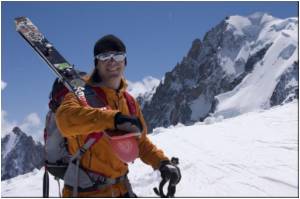
HACE results from swelling of brain tissue due to leakage of fluids from the capillaries. Symptoms include headache, loss of coordination and decreasing levels of consciousness.
"HACE is a life-threatening condition," said Michael Knauth, M.D., Ph.D., from the University Medical Center's Department of Neuroradiology in Goettingen, Germany. "It usually happens in a hostile environment where neither help nor proper diagnostic tools are available."
Dr. Knauth and colleagues at the University Hospitals in Goettingen and Heidelberg, Germany, compared brain MRI findings among four groups of mountaineers: climbers with well documented episodes of HACE; climbers with a history of high altitude illness; climbers with a history of severe acute mountain sickness (AMS); and climbers with a history of isolated high altitude pulmonary edema (HAPE), a life-threatening accumulation of fluid in the lungs that occurs at high altitudes. Two neuroradiologists assessed the brain MRI findings without knowing the status of the mountaineers and assigned a score based on the number and location of any microhemorrhages.
"In most cases, these microhemorrhages are so small that they are only visible with a special MRI technique called susceptibility-weighted imaging," Dr. Knauth said. "With this technique, the microhemorrhages are depicted as little black spots."
The MRI results showed brain microhemorrhages almost exclusively in HACE survivors. Of the 10 climbers with a history of HACE, eight had evidence of microhemorrhages on MRI. The other two had uncertain results. Only two of the remaining 26 climbers were positive for microhemorrhages.
Advertisement
Survivors of the most clinically severe cases of HACE had the most prominent evidence of microhemorrhages on MRI. The bleeds were found predominantly in the corpus callosum, the thick band of nerve fibers that connects the right and left halves of the brain, and showed a characteristic distribution different from other vascular diseases like vasculitis, or blood vessel inflammation.
Advertisement
In the meantime, Dr. Knauth does not think HACE survivors need to give up climbing.
"We cannot give such a strong recommendation," he said. "However, mountaineers who have already experienced HACE once should acclimatize to the altitude very slowly."
Source-Eurekalert













